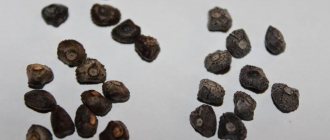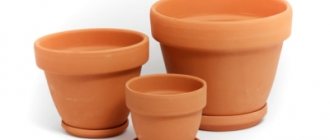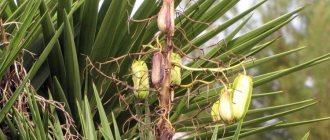Each apartment often has at least one indoor plant, which decorates the interior with its decorative appearance.
Many of them are not just a high-quality element of decoration, they also improve the condition of the air and have some medicinal properties. Among the exotic specimens grown at home, one can highlight the turmeric plant - a photo of an indoor flower, the planting of which is carried out subject to certain requirements.
Several varieties were adapted for home cultivation, which very quickly became popular with most gardeners.
How to grow turmeric
The spice not only tastes good, but also has a beautiful appearance. Therefore, turmeric is often grown both in open space and in apartment conditions. The sowing pattern for turmeric depends entirely on weather conditions and the length of the summer period in the region.
If the warm weather lasts about nine months, then the seedlings are transplanted in the garden, provided that the harvest is harvested before the first cold weather.
In more northern regions, the plant is best grown indoors. Let's figure out how to grow turmeric in open ground?
How to plant turmeric in open ground
Growing turmeric is not a onerous process, but it needs to be approached with some responsibility in order to get a healthy plant.
- Turmeric tolerates sandy and clay soil, shade and light areas well.
- It is preferable to plant turmeric in early spring, when there is no longer frost.
- Before planting turmeric in open ground, you need to prepare the area and dig it to a depth of thirty centimeters.
- The soil should be loose, so it needs to be loosened.
- Prepare holes at a distance of twenty centimeters from each other and the same depth.
- Preparing to plant turmeric. To do this, cut two sections from the rhizome and plant it in a hole so that two buds look up.
- Cover the roots with soil and water.
How to care for turmeric outdoors
The plant does not require special care. It is not whimsical in germinating outdoors, but you need to adhere to certain rules in order for turmeric to feel great, namely:
- Water regularly because turmeric loves moisture.
- The water should be settled and warm.
- The next watering is carried out when the top layer of soil dries.
- Turmeric requires fertilizing containing phosphorus. If the fertilizer is bought in a store, then the dosage should be reduced by half than indicated on the package. The first feeding is done when the inflorescences are forming. The second time you need to apply fertilizer when flowering is over and two weeks have passed.
- Turmeric likes its shape to be maintained and dried foliage and flowers removed. Therefore, you need to frequently look through the plant and pick off everything that has already bloomed and dried out.
- The soil must be loosened after each watering or after natural precipitation. Destroy weeds.
When the above-ground part begins to wither, it is time to harvest. To do this, the rhizomes are dug up before frost and washed from the ground.
Place in boiling water for one minute and place on a piece of absorbent fabric in a room with ventilation. After two weeks, the raw materials are ready for storage.
As you can see, caring for turmeric does not require much expense, but you need to spend time and be attentive to the plant.
Useful tips
- To stimulate the growth of turmeric, you need to leave the soil slightly dry between waterings, since under such conditions the plant begins to actively take root in search of moisture. At the same time, it is strictly forbidden to let the soil dry out too much. The best option is watering once every 2 days;
- Mineral and organic fertilizers should be used approximately once every two weeks to a month. They will further enrich the soil;
- Ceramic pots are best suited for turmeric, as the rhizome can breathe freely in them. Make several drainage holes in the bottom of the pot;
- excellent places for a pot of turmeric are windows facing southwest and southeast;
- During wintering, you can place the rhizome in a container with sand and store it in the refrigerator, periodically moistening it, and plant it in the pot again in the spring.
Growing turmeric on a windowsill is a very real task. Like any living creature, it needs competent care, as well as properly selected conditions. But if you try and take into account all the subtleties, the result will certainly please you!
1
( 2 ratings, average: 5.00 out of 5)
Back
We are growing our own pharmacy on the site! 10 plants that will replace pills
MORE
How to store the harvest
After harvesting, you need to place it in boxes with wet sand, which will be located in a room where the temperature does not rise above twelve degrees Celsius.
If turmeric is stored in crushed form, it is better to keep it in a glass jar. The container must be tightly closed with a lid, because the spice quickly absorbs foreign odors. Store jars in a dark and cool place for three years.
What to do when the plant fades?
Turmeric is a perennial plant, so it will be renewed every spring. Towards the end of autumn, the active phase will end and the wintering period will begin: turmeric will fade and shed its leaves. During the wintering period, the plant does not need heat or active watering. The pot should be placed in a cool place with a temperature of no more than 8-9°C and constantly monitor the soil moisture, not allowing it to dry out, but also not watering it too much.
How to plant turmeric indoors
This plant reproduces only by rhizomes. You can buy them at a flower shop or order them online. To plant turmeric at home, you need to follow some measures, namely:
- choose a pot with a depth and height of at least thirty centimeters;
- be sure to prepare a drainage layer;
- choose light soil with the addition of clay and nutrients;
- Immerse root sections in warm water for 2-3 hours;
- It is better to plant in early spring, but it can be done at any time of the year;
- Divide the rhizome segments so that each has 2-3 buds;
- the soil can be calcined in the oven to destroy germs and pests;
- plant segments with buds to a depth of 5 cm in moist soil, but make sure that the buds point upward;
- pour water at room temperature and settled;
- take the pot to a dark place where the air temperature is thirty degrees Celsius;
- after the shoots appear, move the pot to a window that faces east or west;
- In warm weather, you need to take the turmeric out for airing.
Diseases and pests of turmeric
Turmeric is a relatively disease and pest resistant plant. But when there is insufficient air humidity, it is affected by spider mites and scale insects.
Spider mite
A small arthropod of yellowish, pink or red color settles on the inside of the leaf and feeds on the sap of the plant. With the naked eye, you can easily notice an already sucked tick with a large abdomen and a web around it.
Shields
Insects are round in shape, covered with a shell. They are attached to the outside and inside of the turmeric leaves and stem. The first sign by which scale insects can be recognized is a sticky coating on the plant and near the flowerpot. Adult insects resemble brown tubercles in appearance, tightly connected to the surface of the plant.
Fight against ticks and scale insects
If you do not get rid of the parasites in time, the affected plant gradually withers and then dries up. To prevent this from happening, I bathe my flowerpots in the shower once every month and a half. And if I notice a pest, I wash each leaf with a soft cloth moistened with soapy water.
To get rid of spider mites and scale insects, I also use another absolutely harmless remedy - an infusion of onion peels. To prepare it:
- I pour 100 husks into 500 ml of boiling water.
- Cover the container with a lid and leave to steep for 2-3 hours.
- I strain it.
After this, I pour the liquid into a spray bottle and thoroughly spray the leaves on both sides.
To combat spider mites and scale insects, the low-toxic insectoacaricide Fitoverm is suitable. The solution is easy to prepare:
- Dilute 2 ml of the drug in 500 ml of water;
- Carry out the treatment twice with an interval of 7 days.
Spray the plant with Fitoverm outdoors or in a well-ventilated area. If such pest control seems difficult to you, look at how to grow ginger at home. He is less susceptible to diseases.
Author's note
Natalia Papanova
Blog author
You cannot use chemical insectoacaricides to protect the plant if you plan to eat the roots.
Leaf spot
It is caused by bacteria, microscopic fungi, and viral infections. To prevent spotting, I recommend:
- immediately eliminate parts of the plant on which spotting appears;
- for planting, use only healthy material without any signs of disease;
- Avoid overcrowding of plants.
At the first sign of spotting, I spray my turmeric with Bordeaux mixture. It's easy to prepare:
- For 1 liter of water, 10 g of copper sulfate crystals and 10 g of slaked lime are required.
- I thoroughly mix all the ingredients and strain the liquid through cheesecloth.
- I spray the plants on the same day.
How to care for a plant at home
We have discussed when to plant turmeric seeds. But in order for the plant to feel good at home and delight you with a rich harvest and beautiful flowering, it needs special care.
How to care for turmeric after sowing:
- create a temperature regime that will not drop by less than twenty degrees and rise above thirty-five degrees, otherwise the plant may rot or dry out;
- water and moisten the soil so that the top layer is always moist, but not wet, otherwise the roots may rot;
- spray twice a day with settled and warm water;
- Fertilize the soil once a month, and if the plant is weak, then twice.
Turmeric is a plant that is rarely eaten by any harmful insects, and it gets sick. But if you don’t take care of it properly, then it can also be affected by parasites that need to be fought.
If a thin web appears on the bottom of the leaves, then the spider mite has found a habitat. In this case, you need to give the bush a warm shower, but before that, wash all the leaves and stem down to the root with soapy water.
Cover the wet plant with film and create a greenhouse effect. Protect from direct sunlight.
If root rot appears, begin treatment immediately. To do this, cut off all affected parts and destroy them. Treat the places where the cuts were made with wood ash. Transplant the plant into another soil.
What is turmeric?
Turmeric belongs to the Ginger family. This is a perennial herbaceous plant native to Indochina. Turmeric has a thickened rhizome with multiple branches, on which tuberous thickenings are formed. The leaves of the plant are oblong, the flowers can be of a variety of colors. All parts of turmeric contain significant amounts of essential oils, but the well-known seasoning is made from the roots, dried and ground.
As a spice, turmeric has been known to mankind for quite a long time, more than 2.5 millennia. This spice is part of the popular curry seasoning and is also a good alternative to expensive saffron. In addition to its pungency, turmeric also gives dishes a rich yellow color. This yellow hue of the spice comes from curcumin, which is found in significant quantities in the plant.
Turmeric has a very rich composition. It contains vitamins B and C, iodine, iron, calcium, phosphorus, as well as antioxidants.
Varieties of Turmeric
Turmeric is a delicious and healthy spice that grows all over the world. If it grows in a pot on a windowsill, it will delight you with its flowering from spring until frost. In autumn the harvest is harvested.
There are several varieties of turmeric. The descriptions of the plant species are almost similar to each other, because turmeric is not afraid of harmful insects and, with proper care, feels great in the open ground and indoors.
The leading positions in gardening are occupied by such varieties as:
- aromatic turmeric, which grows up to one meter in height;
- long turmeric, called yellow ginger;
- round turmeric, whose roots, ground into powder, are used instead of starch;
- Cedoaria has a burning taste;
- small turmeric grows up to a meter in height and is grown for decoration;
- Sumatran turmeric is also grown to decorate garden plots.
The beneficial properties of the plant have been known for a long time. Therefore, by consuming turmeric in normal quantities, the spice can cure many diseases and maintain vitality in the body.
Varieties of turmeric for growing at home on the windowsill
I managed to grow turmeric at home from fresh rhizomes of the plant. Before planting, I divided 1 large root into several parts and let the sections dry.
In addition to turmeric, try growing rosemary in your apartment - a real interior decoration and a fragrant addition to gourmet dishes.
You can grow turmeric at home from seeds (rhizomes) purchased at a specialty store. If you manage to buy varieties for indoor growing, you will definitely be pleased with the results.
The flower attracts the eye with its unusual shape and bright color.
In the table I will tell you about the most common varieties that you can choose for indoor growing.
| Variety name | Where does it grow in the wild? | Flower color | Plant height | Where is it used? |
| Aromatic turmeric (Curcuma aromatica), or Indian saffron | Eastern Himalayas, Indian forests, Western Getae | The upper part is white and pink, the lower part is green | 60-70 cm | In cooking for flavoring confectionery products |
| Long turmeric (Curcuma longa), or turmeric, or yellow ginger | India | White-green, white with a cream tint | Up to 90 cm | In cooking, instead of ginger, it is added to curry. Used as a natural dye. In traditional Indian medicine for preparing healing infusions. |
| Turmeric round (Curcuma leucorrhiza) | India | Pink, round shape | 50-80 cm | For making starch |
| Turmeric zedoaria (Curcuma zedoaria) | India, Indonesia, Thailand, China, Java | The upper part is bright pink, the lower part is pink-yellow | Up to 150 cm | In cooking for the preparation of liqueurs, butter dough. In perfumery (the aroma contains notes of camphor, mango) |
| Small turmeric (Curcuma exigua) | India, Ceylon | The upper part is pink-violet, the lower part is pale yellow | 50-60 cm | As an ornamental plant in greenhouses and residential premises |
| Sumatran turmeric (Curcuma sumatrana) | Sumatra | Bright purple | up to 70 cm | As an ornamental plant for indoors and open ground |











